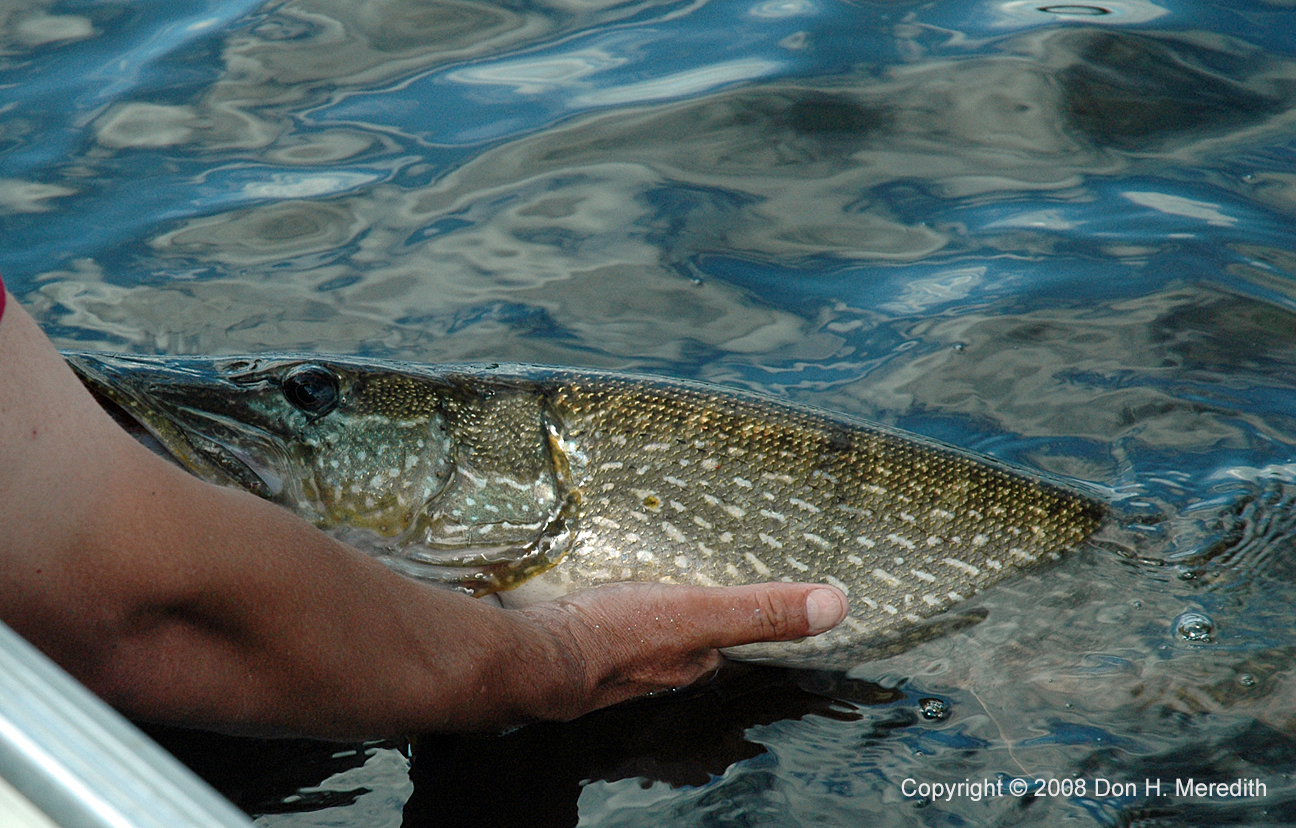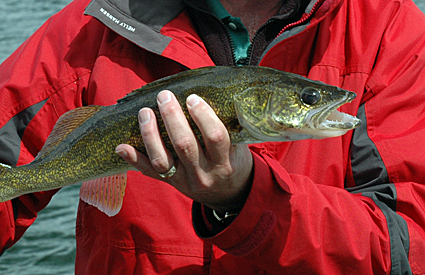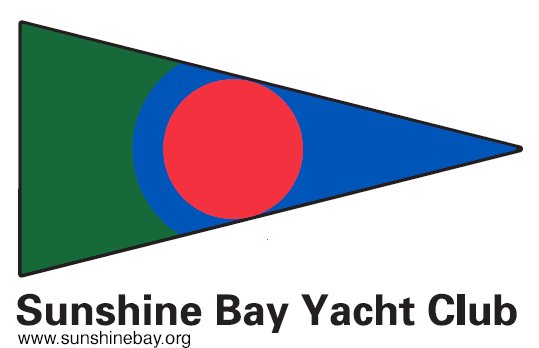Wabamun Lake Fishery
Note: The 2025 Alberta Guide to Sportfishing Regulations is finally published and the regulations are now in effect. There are changes from 2024 for Wabamun Lake. Go to Alberta Fishing Regulations for a copy of the guide.
Some of the most frequent enquires the WWMC receives are from anglers concerned about the health of the recreational fishery. For well over a century, Wabamun Lake was known as a very productive fishery, supporting a vibrant commercial and sport fishing harvest. Over that time, Wabamun had a thriving sport fish community of Northern Pike, Lake Whitefish and Yellow Perch, not to mention ample forage-fish populations of minnows, young game fish, and aquatic insects and other invertebrates.
Many anglers seek trophy northern pike on Wabamun Lake.
Then as a result of the 2005 CN train derailment, in which 560,000 litres of bunker C fuel oil and an unknown amount of pole treating oil (a carcinogenic product) entered the lake, the Alberta government decided to close the harvest of all fish from the lake. Anglers could still fish but they had to release all they caught. Although Alberta Health gave the fish a clean bill-of-health a few months after the spill, the government imposed a catch-and-release-only (C&R) regulation in 2008 that remained in effect until 2021.
After more than 100 years, the government closed Wabamun Lake to commercial fishing in 2003 to conserve fish stocks.
(continued below)
Walleye Restoration
The Alberta Government has long tried to introduce Walleye to the lake. Apparently, they were present in the lake at the turn of the 20th century but were fished out. Walleye are a highly sought-after fish because of their sporting and table-fare qualities. They are present in many lakes in Alberta and anglers lobbied to have them introduced into Wabamun. However, the introductions were not successful. This was most likely because the Wabamun power plant used the lake as its cooling pond since 1956, raising lake water temperature and causing walleye eggs to hatch too early in the spring for the fry to survive. The power plant ceased operations in 2010, and the government decided once again to introduce Walleye in 2011. The introduction was a success, as there was evidence of Walleye spawning and some of the young surviving. No further introductions have been made since 2014.
Despite a prediction that a surplus of Walleye would be available for harvest within three to five years of the introductions, all the fish in the lake struggled to sustain their populations. Using Fall Index Netting (FIN) surveys in 2013 and 2015 and the Provincial Fish Sustainability Index, Alberta Environment and Protected Areas (AEP) determined that the risk to the sustainability of the fish populations in the lake were either High or Very High.
Walleye are a highly sought-after sport fish that have been successfully reintroduced into Wabamun.
2020 FIN
Then in January of 2021, Alberta Environment and Parks posted a summary of its September 13 to 15 2020 FIN of Wabamun Lake on its website. The catch-rate for Walleye had increased (to 25.4) and thus the sustainability index for the fish had improved to Low Risk. As a result, a limited harvest for walleye was opened with the 2021-22 season. Anglers with a Class C Walleye Special Licence may harvest a season-limit of two fish under 43 cm in total length.
Unfortunately, only 4 Northern Pike were caught during the 2020 FIN study. As a result, Northern Pike were classified as Very High Risk and thus remain catch-and-release only. It wasn’t that long ago that AEP was touting Wabamun as a trophy northern pike lake.
The FIN sample caught a total of 69 Lake Whitefish, continuing a steady decline in its FIN catch-rate since the oil spill and walleye introduction. Although the FIN summary did not assign a sustainability index to whitefish, and despite the population’s continued decline, AEP is allowing each angler to harvest 5 whitefish per day.
[Note: AEP has informed the WWMC the whitefish harvest is being allowed because the 69 fish caught in the 2020 FIN sample were showing a good range of age classes, indicating there was successful spawning in the years after the oil spill. It’s felt that the population can sustain a limited harvest, but numbers will be watched.]
As well, an angler can harvest 2 Burbot per day, although AEP has provided no information about their population sustainability.
Yellow Perch remain catch-and-release only. Seven Yellow Perch were caught in the FIN sample and no sustainability index was assigned.
Yellow Perch are a popular sport fish as well as food for larger fish, such as Northern Pike and Walleye. They have never been real abundant in Wabamun but did offer fish-catching opportunities for youngsters fishing into shallow water. Since the 2005 oil spill and the Walleye introduction in 2011, their population has been very low indeed.
Along with many anglers, the WWMC hopes the limited harvest of Walleye will reduce their effect on the other fish in the lake and allow the fish populations to come back to some form of balance. It should also be understood that fish harvest is only one factor in sustaining fish populations. Habitat loss and climate change are also playing large roles in the equation.
2023 FIN
Another Fall Index Netting of the lake was conducted in September of 2023 with a summary of the results published by Environment and Protected Areas in January of 2024. Not a lot has changed since the 2020 FIN. A group of retired fisheries biologists did an independent analysis of the data and came up with different conclusions about the health of the fishery, Wabamun Lake, a Fishery in Crisis.
Our Gold Sponsors—We thank the following corporate members for being Gold Sponsors of the WWMC. [Click on the image to go to the respective website.] For more information about Corporate Membership, please go to our Get Involved page.
Our Silver Sponsors—We thank the following corporate members for being Silver Sponsors of the WWMC. [Click on the image to go to the respective website.] For more information about Corporate Membership, please go to our Get Involved page.















